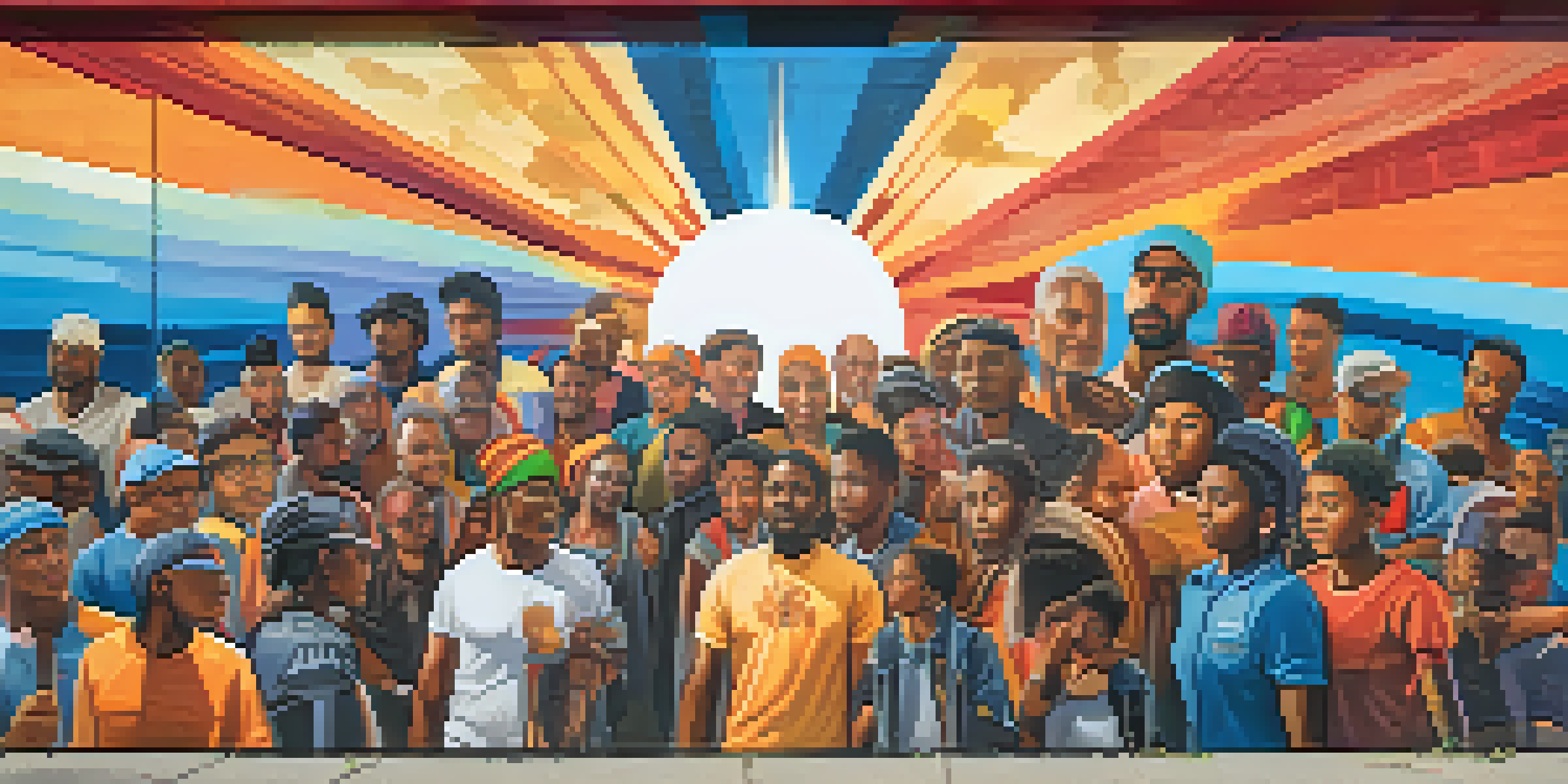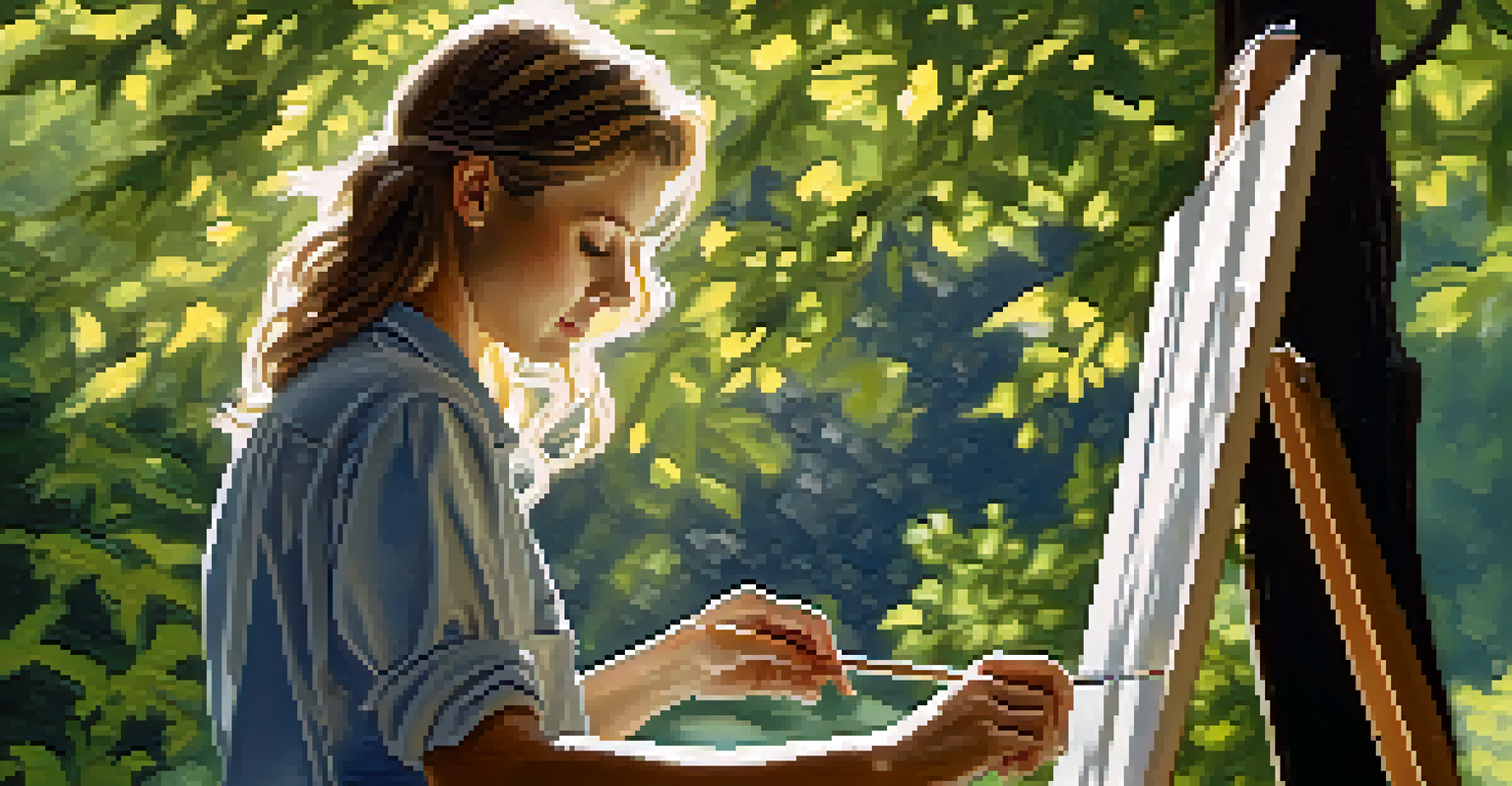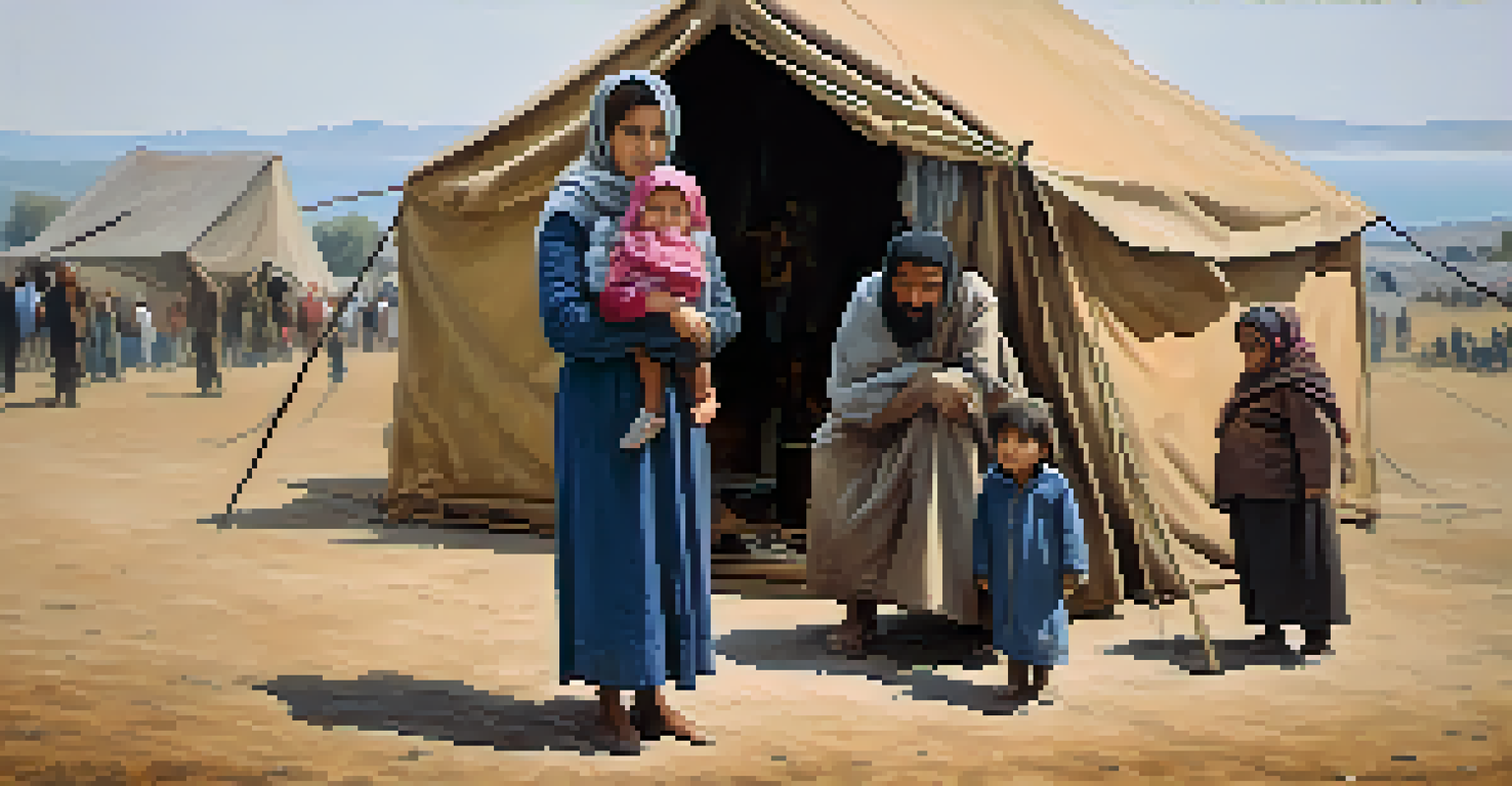Art as a Reflection of Political Turmoil and Conflict

Understanding the Connection Between Art and Politics
Art has always been a mirror reflecting the society in which it exists. It captures the emotions and sentiments of people during various political climates. From paintings to music, artists often use their craft to comment on political events, making their work both a form of expression and a historical document.
Art is not a mirror to hold up to society, but a hammer with which to shape it.
For example, during the Vietnam War, many artists created protest songs that voiced the dissent of a generation. These pieces not only entertained but also educated listeners about the realities of war and its impact on society. This interplay showcases how art can be a powerful tool for political commentary.
Ultimately, the connection between art and politics is profound, as both realms influence one another. Artists can inspire movements and bring awareness to pressing issues, while political events can shape the themes and styles of artistic expression.
Historical Examples of Art Amidst Conflict
Throughout history, art has served as a response to conflict and turmoil. One notable example is Pablo Picasso's 'Guernica,' which vividly depicts the horrors of the Spanish Civil War. This monumental painting not only encapsulates the suffering caused by war but also became a symbol of anti-war sentiment worldwide.

Similarly, the works of the Mexican muralists, like Diego Rivera, emerged during the Mexican Revolution, conveying the struggles of the working class and indigenous people. Their large-scale murals served to educate the public and foster a sense of national identity amid chaos.
Art Reflects Political Climates
Art serves as both expression and historical documentation, capturing the emotions and sentiments of society during various political events.
These instances highlight how art can transcend time and place, echoing the struggles and aspirations of those affected by conflict. They remind us that while political strife can be devastating, it can also inspire powerful artistic expression.
Art as a Tool for Protest and Resistance
Artistic expression often becomes a form of resistance against oppression. In many cases, artists use their platforms to challenge the status quo and inspire change. For instance, street art has emerged as a prominent medium for protest, with artists like Banksy using public spaces to convey powerful messages about social justice and political issues.
Every act of creation is first an act of destruction.
During the Arab Spring, graffiti became a vital communication tool, allowing citizens to voice their frustrations and hopes for a better future. These artworks not only beautified urban landscapes but also served as rallying cries for change, demonstrating the potent combination of art and activism.
This ability of art to mobilize communities and spark dialogue is crucial in times of unrest. It reminds us that creativity can be a powerful weapon in the fight against injustice.
The Role of Social Media in Political Art
In the digital age, social media has transformed how art is created and disseminated, particularly in response to political issues. Artists now have the opportunity to share their work with a global audience instantly, amplifying their message far beyond local boundaries. Platforms like Instagram and Twitter have become virtual galleries for political art.
For instance, during protests, hashtags can help spread awareness of artworks that highlight specific causes, allowing them to reach supporters and activists worldwide. This immediacy can galvanize movements and inspire collective action, demonstrating the power of art in the digital realm.
Art as Resistance and Protest
Artists often use their work to challenge oppression and inspire change, with mediums like street art and graffiti becoming vital tools for activism.
As social media continues to evolve, it will undoubtedly play a significant role in shaping the future of political art, creating new avenues for expression and engagement in times of conflict.
The Emotional Impact of Art During Turmoil
Art has a unique ability to evoke emotions, making it a powerful medium during times of political turmoil. For many, experiencing art related to conflict can provide a sense of catharsis, allowing individuals to process their feelings about events happening around them. This emotional resonance can foster empathy and understanding among diverse audiences.
Consider the powerful photography that captures the plight of refugees; these images can stir compassion and prompt action from those who view them. By engaging viewers emotionally, art can bridge cultural divides and create a shared experience of struggle and resilience.
Ultimately, the emotional impact of art during times of conflict can be profound, reminding us of our shared humanity and the importance of solidarity in the face of adversity.
Contemporary Artists Responding to Modern Conflicts
Today, many contemporary artists are responding to ongoing conflicts through their work, often addressing issues such as war, migration, and climate change. Artists like Ai Weiwei, who uses his art to challenge authoritarian regimes and advocate for human rights, exemplify how modern creators leverage their craft for social change.
Through installations, performance art, and multimedia projects, these artists not only raise awareness but also encourage viewers to engage with critical issues. Their works provoke thought and dialogue, pushing audiences to reflect on the complexities of contemporary society.
Social Media Amplifies Political Art
In the digital age, social media enables artists to share their political messages globally, fostering awareness and galvanizing movements.
As these artists continue to respond to the challenges of our time, their contributions remind us that art remains a vital force for social commentary and transformation.
The Lasting Legacy of Art in Times of Conflict
The legacy of art created during times of political turmoil often endures long after the events have passed. These artworks become historical artifacts, providing insights into the emotions and experiences of those who lived through the conflict. They serve as reminders of the struggles faced and the resilience demonstrated by communities.
For instance, the photographs and writings from the Civil Rights Movement continue to inspire new generations to fight for equality and justice. This enduring impact highlights the important role that art plays in shaping cultural narratives and collective memory.

As we look to the future, it's essential to recognize and support artists who are bravely addressing political issues through their work, ensuring that their voices are heard and their messages continue to resonate.